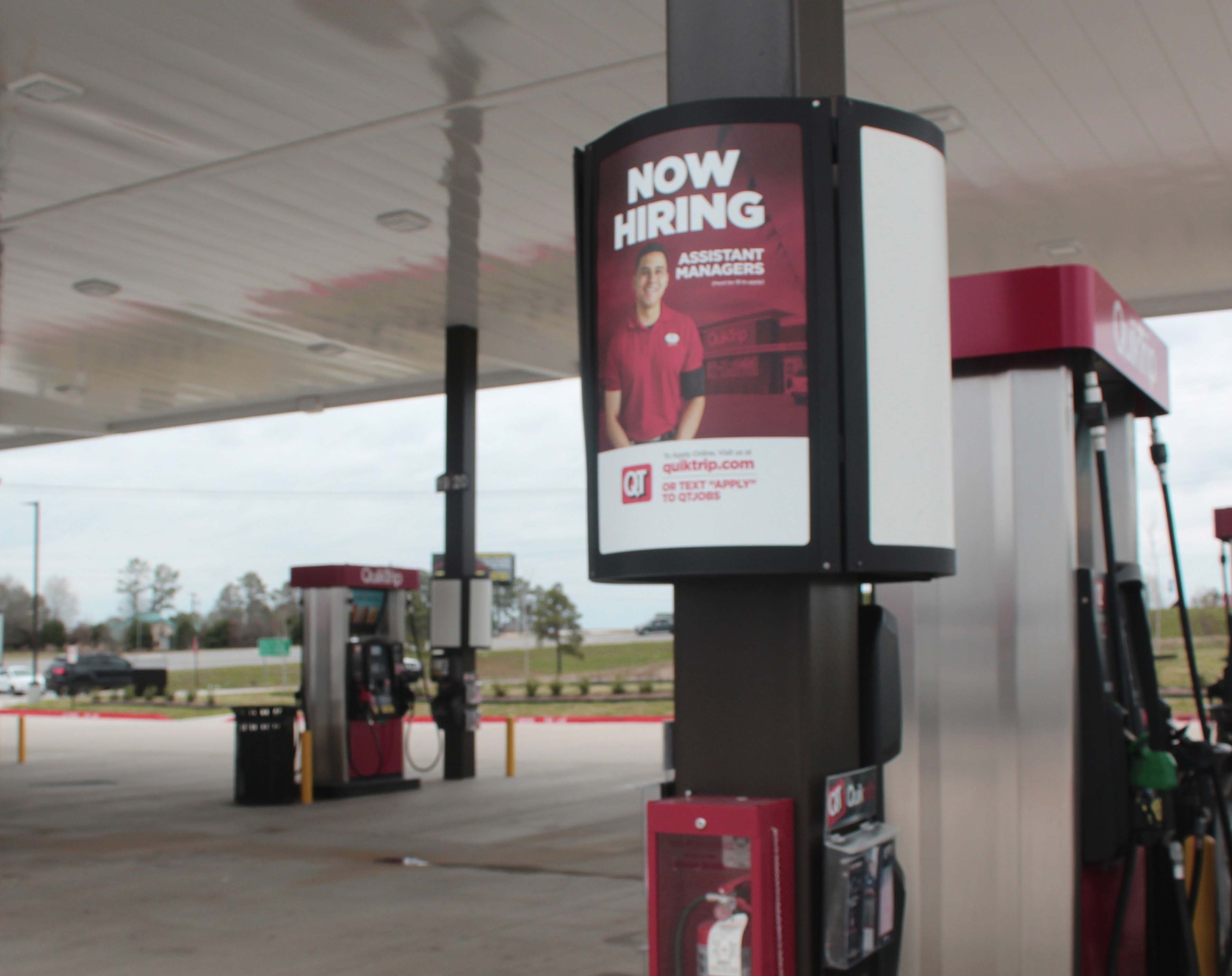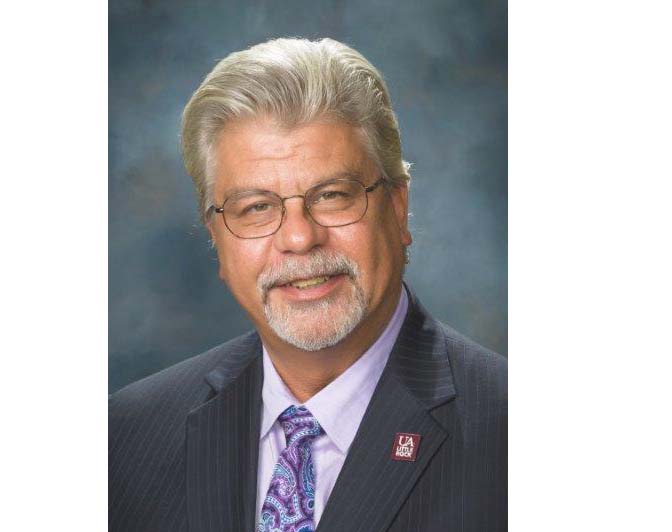The Great Resignation, Arkansas Style: Pandemic-weary workers still not coming back to the labor market in groves
April 4-10, 2022
By Wesley Brown
Although the Arkansas and U.S. jobless rates have declined to an all time low levels in the first two months of 2022, there are still a large swath of workers who are quitting their jobs or not returning to the workforce more than two years after the COVID-19 pandemic began.
In what is being termed by economists and employment experts as the “Great Resignation,” employers are having difficulty filling open positions as workers quit their jobs with increasing frequency in 2021. And that trend has continued in the first two months of 2022, according to the most recent employment data from the U.S. Bureau of Labor Statistics (BLS).
In February, total nonfarm payroll employment rose by 678,000 in February, and the nation’s unemployment rate edged down to 3.8%, BLS reported on March 4. According to Labor Department officials, job growth was widespread, led by gains in leisure and hospitality, professional and business services, health care, and construction.
In Arkansas, the state’s seasonally adjusted unemployment rate fell one-tenth of a percentage point to 3.1%, the lowest jobless tally since the BLS and state Division of Workforce Services (DWS) began compiling such data. Arkansas’ civilian labor force rose 4,569, a result of 5,028 more employed and 459 fewer unemployed Arkansans.
Susan Price, BLS program operations manager for DWS, cited the increased employment levels and the state’s higher labor force participation rate, which now sits at 56.5%. “There are now 28,287 more employed Arkansans than in February 2021,” Price said of the 1,339,378 workers on nonfarm, civilian payrolls at the end of February.
Despite the state’s record jobless rate, Arkansas’ labor force participation rate fell well below the national average at 62.3% in February, which is the percentage of the population that is either working or actively looking for work. BLS data shows that about 4.4 million workers quit their jobs in February, about the same rate as in January. The highest number of workers heading for the exit door were employed in the retail trade, durable goods manufacturing and state and local government education, which Arkansas largely mirrored.
At the end of December, BLS reported that 4.3 million Americans quit their jobs during the holidays, down from 4.5 million in November, which set the record for most Americans quitting their jobs in a single month. For 2021, a record number of 47.8 million American workers voluntarily quit their jobs, a whopping gain of 12 million over the previous year.
In a recent study released on March 17, WalletHub ranked Arkansas at 24th among the 50 states with the highest resignation rates. In ranking all states and the District of Columbia, WalletHub considered the rate at which people quit their jobs in both the latest month and the last 12 months using BLS data. The online financial services firm then used those same metrics to rank-order the resignation rates from highest to lowest.
Victor Devinatz, distinguished professor of management at Illinois State University’s Department of Management and Quantitative Methods, said the main factors influencing the workforce shift in the U.S. varies among different labor force segments.
“Many employees who left their jobs who were over 55 years of age took an early retirement due to the COVID-19 pandemic,” said Devinatz. “Statistics indicate that women employees have exited the labor force at twice the rate as men. And many of these women have left the labor force for involuntary reasons, specifically those who are mothers and have childcare responsibilities. With schools and daycare centers closed or their operatiing unreliable during much of the COVID-19 pandemic, many women had to leave their jobs to take care of their children.”
Arkansas labor pool trends
In his monthly review of Arkansas’ workforce data, University of Arkansas at Little Rock (UA Little Rock) economist Michael Pakko noted that BLS’s recent sampling of the nation’s labor pool shows dramatically different snapshots of the Arkansas job market.
As the beginning of March, the U.S. Labor Department statistical research group released two highly watched monthly surveys that measure employment levels and trends. They included the more familiar Current Population Survey (CPS), also known as the household survey, and the Current Employment Statistics (CES) survey, also known as the payroll or establishment survey. Each month, both surveys are needed for a complete picture of the labor market.
The household survey (CPS) is designed to measure the labor force status of the civilian noninstitutional population. The national unemployment rate is the best-known statistic produced from the household survey. The survey also provides a measure of employed people, one that includes agricultural workers and the self-employed. A representative sample of U.S. households provides the information for the household survey.
The lesser-known payroll survey (CES) is designed to measure employment, hours and earnings in the nonfarm sector, with industry and geographic detail. The survey is best known for providing a reliable gauge of monthly change in nonfarm payroll employment. A representative sample of businesses in the U.S. provides the data for the payroll survey.
According to Pakko, the household survey shows an increase in employment of over 28,000 in Arkansas over the past year. However, by this measure, he said, employment in Arkansas remains more than 22,000 below the peak of February 2020.
On the other hand, nonfarm payroll employment in Arkansas over the past year has expanded by 46,100 jobs and is now 12,800 higher than at the peak of February 2020. “These numbers differ considerably from employment as estimated by the household survey,” said Pakko, noting that household employment dropped by only 5.8% from February to April 2020, while payroll employment declined by 10%.
“There are differences in the coverage of the two-employment series that could conceivably account for their differing patterns of behavior. First, the household survey is typically higher than the payroll survey because the former includes agricultural workers as well as self-employed and workers in private households,” Pakko wrote in his recent March 25 research note. “The relatively slow growth of household employment might indicate declines in these categories of employment. Another difference is that the payroll survey treats multiple jobholders as multiple jobs, whereas the household survey counts the worker only as employed or unemployed. Hence, a dramatic increase in multiple job holders could help explain the higher growth path for nonfarm payroll employment.”
In a follow-up with The Daily Record concerning his blog post at the Arkansas Economist website, Pakko said one of the points he was making is that BLS’s household employment data for Arkansas continues to be inconsistent with the more accurate payroll data.
“Since the labor force figures are derived directly from those employment data, I’m not sure just how important the participation rate concern should be,” said the chief economist and director of UA Little Rock’s Institute for Economic Advancement. “Nevertheless, the data are suggesting that labor force participation rates continue to be lower in Arkansas than in other parts of the country, largely due to demographics, and that Arkansas is at least as slow to recover as the nation.”
Pakko, who also produces a yearly economic outlook for the state of Arkansas with the St. Louis Federal Reserve’s Eighth District office in Little Rock, said the longer-term trend for labor force participation has always been projected to decline as baby boomers retire.
“So perhaps the downshift in labor force participation rates simply reflects a hastening of that process,” said Pakko. “On the other hand, there are plenty of job openings out there: The job opening and labor turnover (JOLTS) data for Arkansas show that there are two job openings for each unemployed worker in the state. The continued weakness in labor force participation might reflect a short run transition in the labor market. The nature of many jobs changed during the pandemic, and the sorting and matching process required for labor markets to clear might just be taking some time to adjust.”
Remote workers in control
Nationally, several recent reports also show that employees and employers are having difficulty navigating through the shifting workforce as the pandemic enters into its third year. A nation survey released by Arlington, Va.-based Eagle Hill Consulting shows that employers continue to face acute labor shortages due to factors like the Great Resignation and employees out sick or facing long COVID complications.
“The pandemic forced employers to pivot their business and workforce strategies almost overnight, and some of those changes are resonating well with employees,” said Melissa Jezior, Eagle Hill Consulting president and chief executive officer. “For example, employees long have been advocating for more flexibility and remote work, and the pandemic forced the issue for employers.”
“But even with some improvements, employees still have low confidence in organizational leadership and culture,” Jezior said. “These are difficult issues to address, without quick fixes, and they require rebuilding trust and improving employee engagement. Employers are wise to build on the positive changes implemented during the pandemic to set the stage for addressing any trust, confidence, leadership and culture concerns across an organization.”
Meanwhile, a report by FlexJobs.com notes that while salary is still a key factor in hiring and retaining workers, flexible and remote scheduling options now play an outsized role in influencing that decision. To fill open roles, many job seekers are finding they can get many of the flexible options they want along with the salary they desire, the report said.
Between Feb. 23 and March 7, 2022, FlexJobs surveyed 1,248 currently employed people concerning which compensation and benefits are most important to them. While salary was the number one response (83%), remote work was close behind at 77%. The other compensation and benefits that matter most to employees are flexible scheduling (63%), health insurance (63%), vacation time (62%), retirement plans (50%) and further training and education (44%).
Other top perks that pandemic-weary new hires are seeking include special company perks, performance bonuses, equity compensation and paid parental leave. Also, once considered an extremely fringe benefit, nearly 29% of respondents ranked four-day workweeks as the most important.
And even though workers have vocalized the importance of remote work options, 36% reported that their companies will require them to be in the office full-time post-pandemic. Twenty-eight percent expect a hybrid workplace, and 23% anticipate a fully remote workplace. The remaining 11% were not sure about their company’s plans yet.
“We continue to see evidence that post-pandemic workers will not only expect but in many cases demand the ability to work remotely at least some of the time,” said Sara Sutton, founder and CEO of Boulder, Colo.-based Flex Jobs, an online career and job placement firm for remote workers. placement. “Placing remote work and flexible schedule options on par with or even above key benefits, such as health insurance and vacation time, speaks very loudly about what today’s workers truly value, and I hope companies are listening,” Sutton concluded.
COVID-19 also remains a top concern of returning to the office, with 49% saying they are worried about exposure and infection. An additional 46% and 43%, respectively, are concerned that returning to the office means less flexibility and less work-life balance.
Photo Captions:
1. Little Rock Tech Park tenants grab a cup of gourmet java at the Paranoid Android coffee shop on the first floor of the downtown tech village.
2. Tulsa, Okla.-based QuikTrip is among dozens of Arkansas employers seeking workers to fill open positions. The national convenience store chain recently opened its second Arkansas store in Little Rock's Otter Creek area.
3. The U.S. Bureau of Labor Statistics recently reported that a record 47.8 million American workers voluntarily quit their jobs in 2021. Many of those workers have started home-based businesses, BLS data shows.
4.A Little Rock Tech Park tenant works from his office overlooking Main Street. The downtown tech village is starting to see an increase in occupancy rates after a yearlong lull during the pandemic, according to Brent Birch, executive director of the city's first incubator for early stage firms.
5. Michael Pakko noted that BLS’s recent sampling of the nation’s labor pool shows dramatically different snapshots of the Arkansas job market.







